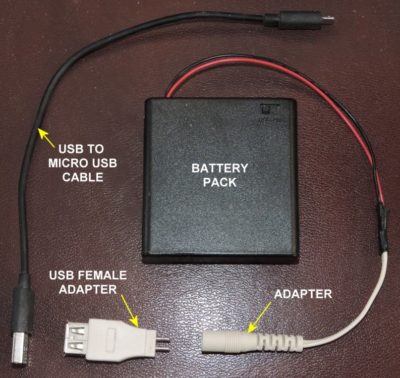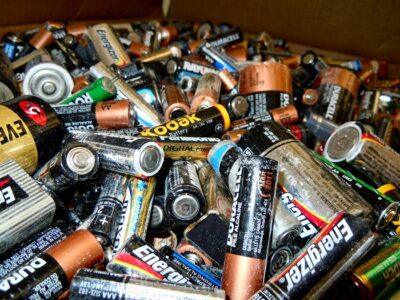I just recently started buying batteries in 100 packs. A few short years ago, you couldn’t do that. But we use so many handheld electronic devices nowadays that it’s just about to the point where batteries are going to have to become a separate line item on most people’s budgets.
A few people have solved this problem by switching over to rechargeables. But, rechargeable batteries are expensive, especially buying enough to operate everything that uses them. Besides, rechargeable batteries aren’t going to be much help when the grid goes down and you don’t have electrical power to recharge them.
In such a situation, you need to be able to get the most out of your batteries. Fortunately, you can get a lot more mileage out of your typical battery than you think.
The Batteries
The most common battery sizes – AA and AAA – provide a nominal 1.5 volts of DC power. I use the word “nominal” because that’s what they are rated at. But in reality, a new AA alkaline battery actually produces slightly more power than that. As the battery is used, the voltage that it produces drops. In most cases, the device stops working when the voltage produced by the battery(s) is less than what it needs.
New Mini Pocket Power Plus Can Charge All Your Electronics — And Jump Start Your Car!
Few devices actually work off of one AA 1.5 volt battery. In most cases, you have to put in several. The device connects the batteries in series; which means that the positive end of one battery is connected to the negative end of the next. When batteries are connected together in this manner, the total voltage of the batteries is increased. For example:
- Two AA batteries provide a nominal three volts
- Four AA batteries provide a nominal six volts
- Eight AA batteries provide a nominal 12 volts
The same applies to AAA, C and D cell batteries, which all produce 1.5 volts. The only difference is that the larger batteries can produce that amount of voltage for a longer period of time, or for devices that draw more current.
The Devices

A four AA battery pack, producing 5.2 volts with “dead” batteries. This is enough to power or charge anything that works off a USB charger
Most portable electronic devices today run off of five volts or 3.6 volts. The USB port on a computer provides five volts, so anything that can be charged off a USB charger is using a maximum of five volts. As long as the batteries in the device total less than five volts, the computer’s USB port is able to charge them.
If you look at the battery of the average cell phone, you will find that it uses a lithium-Ion battery that is rated at 3.6, 3.7 or 3.8 volts, depending on the manufacturer. That’s how it is able to charge off a USB charger. The voltage of the battery is less than that provided by the USB port.
You can easily find the voltage required by any electrical device by looking in the owner’s manual. Even if you don’t have the owner’s manual, you can find out how much voltage it requires by checking the device’s case where a charger connects (where it should be marked), checking the charger itself (which should also be marked) or checking the number of batteries in the device.
Most devices that use AA batteries will stop working when the battery voltage drops to 1.3 volts. Since all the batteries drop voltage equally, that means that:
- A two battery device will be at 3.4 volts when it stops working
- A four battery device will be at 5.2 volts when it stops working
- An eight battery device will be at 10.4 volts when it stops working
At this point, the battery is normally considered “dead.” But, as I just said, the battery still has 1.3 volts of power in it. So it isn’t truly dead, just partially dead. There is still power available, if we know how to access it.
The Trick
Electronic devices are designed to hold the number of batteries that they need to operate. But most devices today also have a jack for connecting some sort of a charger or power adapter. So, it’s possible to supply power to that device from an outside source. The device doesn’t care what that outside source is, just that it provides the right amount of power.
The Latest Breakthrough Advancement In Solar Backup Generators Is Here!
In other words, we can use more batteries for an external power source than what the device is designed to hold in its internal battery holder. So, if we have a device that uses four AA batteries, normally producing six volts, all we need to do is find 6 volts of battery power.
Taking our “dead” AA batteries, we can get six volts by stringing five of them together (5 x 1.3v = 6.5v); but nobody makes battery holders for five AA batteries. So, instead of stringing five of them together, we can string six together. There are battery holders for that. Six dead AA batteries will give us 7.8 volts. Since most devices have an internal voltage regulator, chances of damaging the device are virtually nonexistent.
All we have to do is attach the right sort of connector to the six battery holder and we have a power source for our four battery device.
While the battery pack can be connected directly to a fixed connector for use with a specific device, it also can be connected through a multi-connector adapter, allowing you to use various different types of connectors with it, as shown in the picture. In this case, there is a USB female adapter, which allows the typical USB to Micro USB cable for charging a phone or tablet.
If the device is equipped with rechargeable batteries, such as cell phones, the battery pack will charge the internal batteries. However, if it did not come equipped with rechargeable batteries, then the device will be powered by the batteries, but it will not recharge the internal batteries.
The battery pack shown in the photo was actually designed to power USB chargeable devices. In this case, only four batteries were used. That would give a starting nominal voltage of 6 volts, which is more than the USB port provides. But even if “dead” batteries were used, it would produce 5.2 volts, which is enough to power or charge those devices.
We’re Not Done
Those batteries will continue to provide power until they have discharged to the point where the total output voltage is below the needs of the device. We already determined that for a four AA battery device, this is 5.2 volts. So, when the batteries in the battery pack get down to a total of 5.2 volts, the batteries will once again be considered dead … but they’re not.
At this point, the batteries are producing 0.867 volts. While not a lot, it’s still a touch over half the battery’s original charge. So, we move the batteries out of the six battery holder into an eight battery holder, adding two more along the way. We now have a battery pack producing 8.67 volts, allowing us to continue powering our device.
I haven’t actually timed it out to prove my rough calculations, but it appears that with this system, you can receive a little over double the life out of the same batteries. That is not only a great money saver, but also provides an excellent means of getting more mileage out of your batteries in a survival situation.
What tips would you add? Are there other ways you bring your batteries back to life? Share your tips in the section below:
Discover The Trick To Saving Thousands At The Grocery Store. Read More Here.
 Off The Grid News Better Ideas For Off The Grid Living
Off The Grid News Better Ideas For Off The Grid Living





